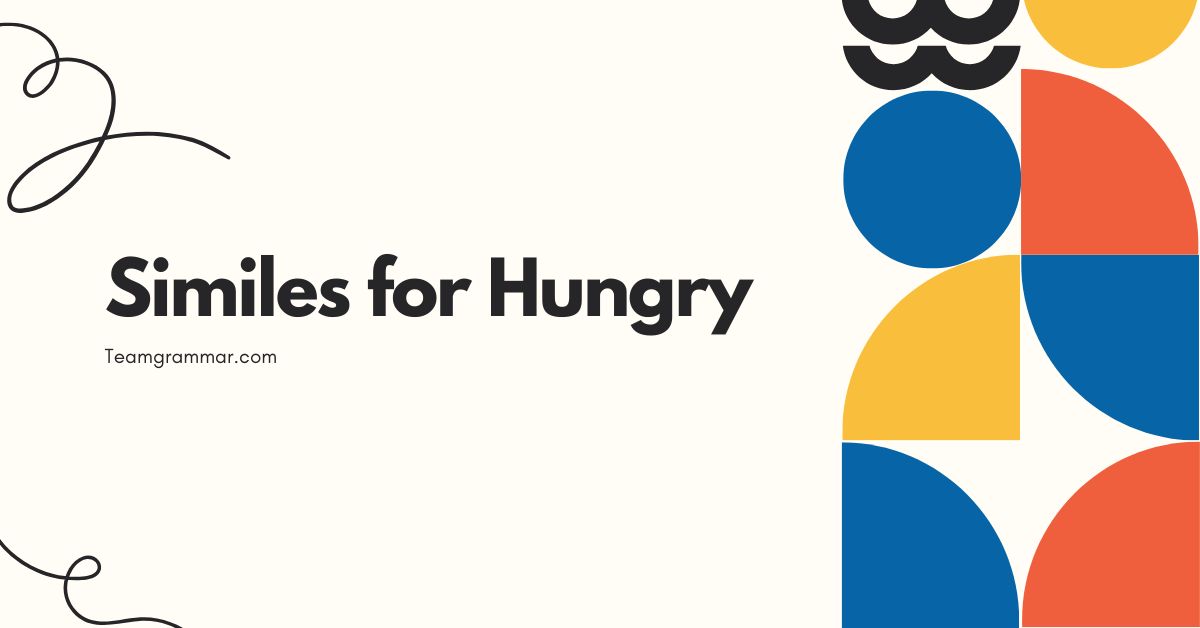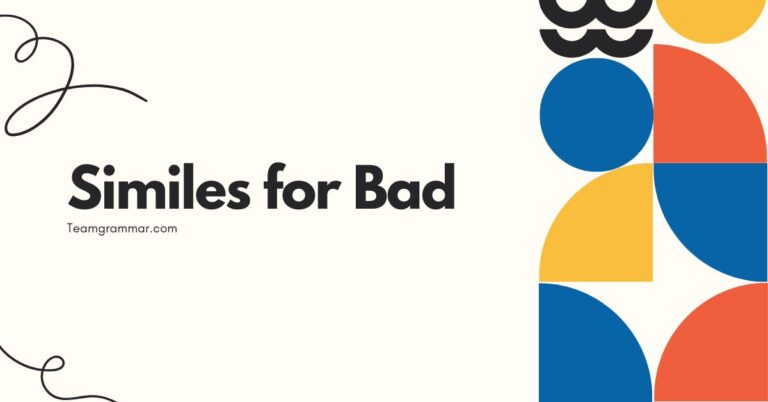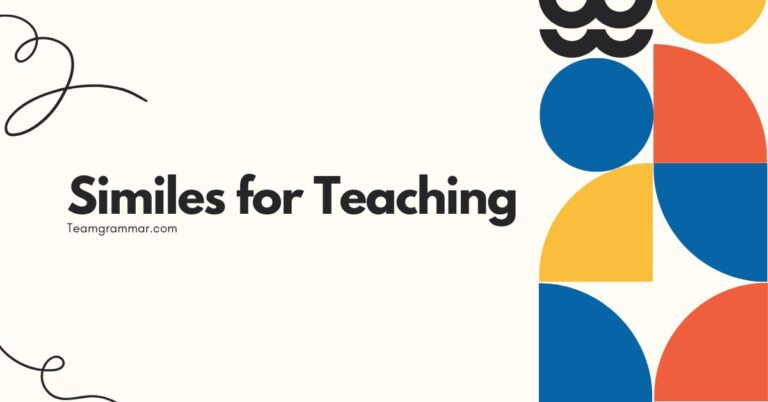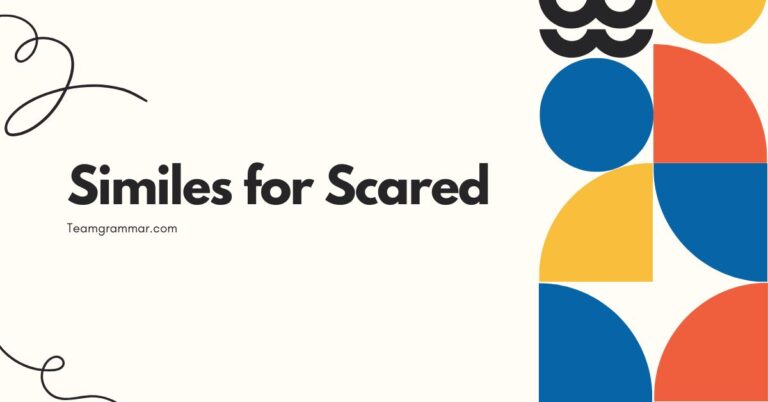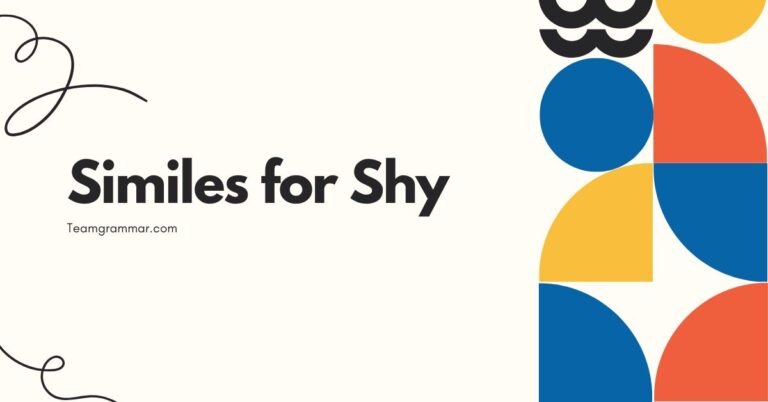49 Similes for Hungry: A Comprehensive Guide to Expressing Hunger
Understanding and using similes effectively enhances your descriptive writing and speaking skills. Similes comparing hunger to other concepts can vividly convey the intensity of the feeling.
This article explores various similes for “hungry,” providing definitions, structural breakdowns, examples, usage rules, and practice exercises. Whether you’re an English language learner or a seasoned writer, this guide will equip you with the tools to express hunger in creative and impactful ways, adding depth and color to your descriptions.
Table of Contents
- Introduction
- Definition of Simile
- Structural Breakdown of Similes
- Types of Similes for Hungry
- Examples of Similes for Hungry
- Usage Rules for Similes
- Common Mistakes When Using Similes
- Practice Exercises
- Advanced Topics in Similes
- Frequently Asked Questions (FAQ)
- Conclusion
Definition of Simile
Asimileis a figure of speech that compares two unlike things using the words “like” or “as.” It’s a tool used to create vivid imagery and enhance understanding by drawing parallels between something familiar and something less known. Similes help to paint a clearer picture in the reader’s or listener’s mind, making descriptions more engaging and memorable.
Essentially, a simile asserts that one thing issimilarto another in some specific way.
Similes are classified as a type of figurative language, specifically under tropes, which involve altering the usual meaning of words. Their primary function is descriptive, adding color and depth to writing or speech.
Similes are used in various contexts, from literature and poetry to everyday conversation and advertising. They can express emotions, describe physical attributes, or explain complex concepts in a simple and relatable manner.
The effectiveness of a simile lies in its ability to create a strong and immediate connection between two seemingly disparate things.
Structural Breakdown of Similes
The basic structure of a simile involves three key components: thesubject, thelinking word(“like” or “as”), and theobject of comparison. The subject is the thing being described, and the object of comparison is what it’s being compared to.
The linking word establishes the relationship between the two. Understanding this structure is crucial for creating and interpreting similes effectively.
The formula for a simile can be expressed as:Subject + Linking Word + Object of Comparison. For example, in the simile “He was as hungry as a wolf,” “He” is the subject, “as” is the linking word, and “a wolf” is the object of comparison.
This simple structure allows for a wide range of creative expressions. The strength of the simile depends on how well the connection between the subject and object of comparison is established and how vividly it conveys the intended meaning.
Varying the elements within this structure can lead to more nuanced and impactful similes.
Types of Similes for Hungry
Similes for “hungry” can be categorized based on the nature of the comparison they make. These categories help to understand the nuance each simile brings.
Some common types include:
Similes Comparing Hunger to Animals
These types of similes often emphasize the primal or instinctual nature of hunger. They draw on the imagery of animals known for their voracious appetites or constant search for food.
Similes Comparing Hunger to Emptiness
These similes focus on the feeling of hollowness or lack associated with hunger. They highlight the absence of food and the discomfort it causes.
Similes Comparing Hunger to Urgency or Desperation
These similes convey the intense and pressing need for food. They emphasize the feeling of desperation and the urgency to satisfy hunger.
Similes Comparing Hunger to Abstract Concepts
These similes use more abstract or metaphorical comparisons to describe hunger. They can be more creative and thought-provoking, adding depth to the description.
Examples of Similes for Hungry
Here are extensive examples of similes for “hungry,” organized by category, to illustrate the various ways you can express this feeling.
Examples Comparing Hunger to Animals
This table shows how hunger can be compared to the appetites and behaviors of various animals.
| Simile | Explanation |
|---|---|
| As hungry as a wolf | Implies a ravenous, intense hunger. |
| As hungry as a bear | Suggests a large appetite, often after hibernation. |
| As hungry as a horse | Indicates a need for a substantial amount of food. |
| As hungry as a lion | Conveys a fierce and predatory hunger. |
| As hungry as a bird | While birds can eat a lot relative to their size, this can also imply a delicate or constant hunger. |
| As hungry as a pack of hyenas | Suggests a collective and aggressive hunger. |
| As hungry as a swarm of locusts | Implies a destructive and insatiable hunger. |
| As hungry as a stray dog | Conveys a desperate hunger born of neglect and hardship. |
| As hungry as a shark | Indicates a relentless and predatory hunger, always seeking its next meal. |
| As hungry as a caterpillar | Suggests a constant need to consume, preparing for a transformation. |
| As hungry as a newborn chick | Implies a constant need for feeding due to vulnerability and rapid growth. |
| As hungry as a caged tiger | Conveys a pent-up, intense hunger resulting from confinement. |
| As hungry as a hibernating groundhog waking up | Suggests a deep, restorative hunger after a long period of dormancy. |
| As hungry as a flock of seagulls | Implies a competitive and noisy hunger, with many vying for the same food source. |
| As hungry as a mother bear protecting her cubs | Conveys a primal hunger driven by the need to provide for offspring. |
| As hungry as a wolf in winter | Suggests a desperate hunger brought on by harsh conditions and scarcity of prey. |
| As hungry as a bird with a broken wing | Implies a vulnerable hunger, where the ability to forage is compromised. |
| As hungry as a pack of wolves after a long hunt | Conveys a collective and satisfying hunger after expending significant energy. |
| As hungry as a lioness feeding her cubs | Suggests a nurturing hunger, where sustenance is shared with offspring. |
| As hungry as a bear coming out of hibernation | Implies a profound, restorative hunger after a long period of dormancy. |
| As hungry as a stray cat | Conveys a persistent hunger due to a lack of regular meals and a constant search for food. |
| As hungry as a newly hatched bird | Implies a fragile and immediate need for nourishment to ensure survival. |
| As hungry as a fox in the henhouse | Suggests a cunning and opportunistic hunger, seizing any available chance for a meal. |
| As hungry as a school of piranhas | Conveys a frenzied and competitive hunger, with everyone vying for a piece of the food. |
| As hungry as a vulture circling its prey | Implies a patient and opportunistic hunger, waiting for the opportune moment to feed. |
Examples Comparing Hunger to Emptiness
This table illustrates similes that describe hunger as a void or absence within oneself.
| Simile | Explanation |
|---|---|
| As empty as a drum | Suggests a hollow, aching feeling in the stomach. |
| As hollow as a well | Conveys a deep and persistent emptiness. |
| As empty as a deserted house | Implies a sense of desolation and lack of sustenance. |
| As empty as a bank account after rent | Suggests a depleted state, with nothing left to satisfy. |
| As empty as a promise | Conveys a feeling of unfulfillment and lack. |
| As empty as a ghost town | Implies a desolate and uninhabited feeling in the stomach. |
| As empty as a blank canvas | Suggests a void waiting to be filled with nourishment. |
| As empty as a broken vase | Conveys a sense of something once full now lacking. |
| As empty as a dried-up riverbed | Implies a parched and barren feeling, desperately needing replenishment. |
| As empty as a forgotten tomb | Suggests a deep and lingering sense of absence and unfulfillment. |
| As empty as a vacant lot | Conveys a sense of unused potential and lack of nourishment. |
| As empty as a silent theater | Implies a quiet and hollow feeling, devoid of the energy of sustenance. |
| As empty as a deflated balloon | Suggests a lack of energy and a diminished state due to hunger. |
| As empty as a barren desert | Conveys a sense of desolation and lack of sustenance in the stomach. |
| As empty as a hollow tree | Implies a void or emptiness within, craving to be filled. |
| As empty as a broken heart | Suggests a deep, emotional void mirroring the physical lack of food. |
| As empty as a drained battery | Conveys a lack of energy and vitality due to insufficient nourishment. |
| As empty as a forgotten attic | Implies a sense of neglect and a lack of attention to the need for sustenance. |
| As empty as a vacant stare | Suggests a listless and unfocused feeling resulting from hunger. |
| As empty as a politician’s promise | Conveys a sense of unfulfilled expectation and disappointment mirroring the physical craving for food. |
| As empty as a cave | Implies a dark, hollow feeling in the stomach, craving to be filled with nourishment. |
| As empty as a well after a drought | Suggests a profound and prolonged lack, desperately needing replenishment. |
| As empty as a school on summer vacation | Conveys a quiet and desolate feeling, lacking the vibrancy of sustenance. |
| As empty as a museum after hours | Implies a stillness and lack of activity, mirroring the absence of food in the stomach. |
| As empty as a wallet after a shopping spree | Suggests a depleted state, with resources exhausted and nothing left to satisfy the craving. |
Examples Comparing Hunger to Urgency or Desperation
The following table demonstrates how similes can depict hunger as an urgent and desperate need.
| Simile | Explanation |
|---|---|
| As desperate as a castaway | Conveys a strong, survival-driven need for food. |
| As urgent as a ticking bomb | Implies an immediate and pressing need to eat. |
| As eager as a child on Christmas morning | Suggests an intense anticipation and desire for food. |
| As needy as a plant without water | Conveys a vital and urgent requirement for sustenance. |
| As frantic as a shopper on Black Friday | Implies a desperate and competitive rush to satisfy hunger. |
| As urgent as a cry for help | Conveys a critical and immediate need for nourishment. |
| As desperate as a marathon runner nearing the finish line | Suggests an exhausted and urgent need for replenishment. |
| As eager as a student awaiting exam results | Implies an intense anticipation and anxiety-driven desire for food. |
| As needy as a newborn baby | Conveys a constant and immediate requirement for nourishment. |
| As frantic as someone searching for their keys before work | Implies a rushed and urgent need to find a quick source of sustenance. |
| As urgent as a fire alarm | Conveys an immediate and pressing need to address the hunger. |
| As desperate as a traveler lost in the desert | Suggests a life-or-death need for food and resources. |
| As eager as a dog waiting for a treat | Implies an enthusiastic and impatient desire for food. |
| As needy as a plant in a drought | Conveys a critical and urgent requirement for sustenance to survive. |
| As frantic as a parent searching for a lost child | Implies a desperate and panicked need to find a source of nourishment. |
| As urgent as a medical emergency | Conveys an immediate and critical need to address the hunger. |
| As desperate as a shipwreck survivor clinging to debris | Suggests a survival-driven need for food and rescue. |
| As eager as a child opening presents | Implies an enthusiastic and impatient desire for a meal. |
| As needy as a flower wilting in the sun | Conveys a vital and urgent requirement for sustenance to revive. |
| As frantic as a student cramming for an exam | Implies a rushed and urgent need to fuel the brain with nourishment. |
| As urgent as a tornado siren | Conveys an immediate and pressing need to seek sustenance to survive. |
| As desperate as a climber on a steep mountain face | Suggests a survival-driven need for energy and food to continue. |
| As eager as a sports fan waiting for the game to start | Implies an intense anticipation and desire for the enjoyment of food. |
| As needy as a garden without rain | Conveys a vital and urgent requirement for nourishment to thrive. |
| As frantic as someone trying to catch a flight | Implies a rushed and urgent need to grab a quick bite before boarding. |
Examples Comparing Hunger to Abstract Concepts
This table shows more abstract and metaphorical similes for expressing hunger.
| Simile | Explanation |
|---|---|
| As sharp as a knife | Implies a piercing, intense hunger. |
| As gnawing as guilt | Conveys a persistent and uncomfortable hunger. |
| As consuming as fire | Suggests an all-encompassing and overwhelming hunger. |
| As deep as the ocean | Implies a profound and insatiable hunger. |
| As insistent as a drumbeat | Conveys a persistent and unavoidable hunger. |
| As hollow as a broken promise | Implies a sense of disappointment and unfulfillment, mirroring the craving for food. |
| As consuming as a black hole | Suggests an insatiable hunger that seems to devour everything in its path. |
| As sharp as a migraine | Conveys an intense and piercing discomfort caused by hunger. |
| As gnawing as anxiety | Implies a persistent and unsettling feeling of hunger that’s hard to ignore. |
| As deep as a well | Conveys a profound and seemingly endless hunger. |
| As insistent as a ringing phone | Implies a persistent and demanding signal from the body for nourishment. |
| As consuming as a wildfire | Suggests a rapidly spreading and overwhelming hunger that’s hard to contain. |
| As sharp as a craving | Conveys an intense and specific desire for a particular food. |
| As gnawing as regret | Implies a persistent and uncomfortable feeling of hunger that lingers. |
| As deep as a canyon | Conveys a profound and seemingly bottomless hunger. |
| As insistent as a persistent thought | Implies a constant and unavoidable reminder of the need for food. |
| As consuming as a passion | Suggests an all-encompassing and overwhelming desire for sustenance. |
| As sharp as a sting | Conveys an intense and immediate discomfort caused by hunger. |
| As gnawing as loneliness | Implies a persistent and unsettling feeling of emptiness, mirroring the physical craving for food. |
| As deep as a secret | Conveys a profound and hidden hunger that’s hard to admit. |
| As insistent as a heartbeat | Implies a constant and unavoidable reminder of the body’s need for nourishment. |
| As consuming as a burning desire | Suggests an all-encompassing and overwhelming hunger that drives one’s actions. |
| As sharp as a memory | Conveys an intense and vivid reminder of the satisfaction of past meals. |
| As gnawing as doubt | Implies a persistent and unsettling feeling of uncertainty, mirroring the physical craving for food. |
| As deep as a mystery | Conveys a profound and inexplicable hunger that’s hard to understand. |
| As insistent as a nagging question | Implies a constant and unavoidable reminder of the need to find sustenance. |
Usage Rules for Similes
Using similes effectively requires understanding a few key rules. First, ensure that the comparison is logical and makes sense.
The object of comparison should have a quality that clearly relates to the subject. Second, avoid clichés.
Overused similes can weaken your writing. Third, be mindful of the context.
The appropriateness of a simile depends on the tone and purpose of your writing or speech. Fourth, ensure clarity.
The simile should enhance understanding, not confuse the audience.
Exceptions and Special Cases:While most similes use “like” or “as,” there are instances where implied similes, or metaphors, can achieve a similar effect without explicitly using these words. Additionally, some similes may be culturally specific, meaning their meaning might not be universally understood.
It’s important to consider your audience when using such similes. Finally, be aware of the potential for misinterpretation.
A simile that seems clear to you might not be as clear to others, so always strive for precision and clarity in your comparisons.
Common Mistakes When Using Similes
Several common mistakes can undermine the effectiveness of similes. One frequent error is using clichés, such as “as hungry as a horse,” without considering the impact on the audience.
Another mistake is creating illogical comparisons, where the connection between the subject and object of comparison is weak or nonexistent. Additionally, overuse of similes can make your writing sound repetitive and uninspired.
Finally, misusing “like” and “as” grammatically can weaken the sentence structure.
Here are some examples of common mistakes and their corrections:
| Incorrect | Correct | Explanation |
|---|---|---|
| He was as hungry as food. | He was as hungry as a wolf. | The object of comparison should be something that experiences hunger. |
| She was hungry like a happy day. | She was as hungry as a bear. | The comparison should be logical and related to the feeling of hunger. |
| He was as hungry as always. | He was as hungry as a lion. | This lacks a specific comparison; it needs an object of comparison. |
| She was hungry as like a bird. | She was as hungry as a bird. | Avoid redundancy; “as” and “like” should not be used together. |
| He was like hungry. | He was as hungry as a wolf. | The correct structure requires “as [adjective] as” or “[verb] like.” |
Practice Exercises
Test your understanding of similes with these practice exercises.
Exercise 1: Fill in the Blanks
Complete the following sentences with appropriate similes for “hungry.”
| Question | Answer |
|---|---|
| 1. After the hike, I was ____________________. | as hungry as a bear |
| 2. The children were ____________________ for their dinner. | as hungry as wolves |
| 3. He felt ____________________ after skipping breakfast. | as empty as a drum |
| 4. The stray dog looked ____________________. | as hungry as a stray dog |
| 5. She was ____________________ for some chocolate. | as eager as a child on Christmas morning |
| 6. After working all day, he was _______________. | as hungry as a horse |
| 7. The refugees, after days without food, were ____________________. | as desperate as castaways |
| 8. The athlete, after the intense training, was ____________________. | as hungry as a lion |
| 9. The student, skipping meals to study, was ____________________. | as needy as a plant without water |
| 10. The explorers, after trekking for weeks, were ____________________. | as hungry as a pack of hyenas |
Exercise 2: Identify the Simile
Identify the simile in each sentence and explain what it means.
| Question | Answer |
|---|---|
| 1. He was as hungry as a wolf, devouring his meal in minutes. | Simile: as hungry as a wolf. Meaning: Extremely hungry, eating with great voracity. |
| 2. Feeling as empty as a drum, she craved a hearty meal. | Simile: as empty as a drum. Meaning: Feeling a hollow, intense hunger. |
| 3. They were as eager as children on Christmas morning, waiting for the pizza to arrive. | Simile: as eager as children on Christmas morning. Meaning: Extremely excited and impatient for food. |
| 4. After the marathon, she was as hungry as a bear, ready to eat anything in sight. | Simile: as hungry as a bear. Meaning: Having a very large appetite and intense hunger after exertion. |
| 5. The starving artist felt as hollow as a well, yearning for a decent meal. | Simile: as hollow as a well. Meaning: Feeling a deep and persistent emptiness due to hunger. |
| 6. The hikers were as hungry as a pack of wolves after their long trek. | Simile: as hungry as a pack of wolves. Meaning: Extremely ravenous and aggressive in their hunger. |
| 7. He approached the buffet as insistent as a drumbeat, knowing he had to satisfy his hunger. | Simile: as insistent as a drumbeat. Meaning: A persistent and unavoidable feeling of hunger. |
| 8. After the surgery, she was as needy as a plant without water, craving nourishment. | Simile: as needy as a plant without water. Meaning: A vital and urgent requirement for sustenance to recover. | 9. He felt as desperate as a castaway for a hot meal after the storm. | Simile: as desperate as a castaway. Meaning: A strong and survival-driven need for food to alleviate hunger. |
| 10. She looked at the cake as consuming as fire, unable to resist taking a slice. | Simile: as consuming as fire. Meaning: An all-encompassing and overwhelming desire for the cake. |
Exercise 3: Create Your Own Similes
Write your own similes for “hungry,” using different objects of comparison.
| Question | Answer |
|---|---|
| 1. Create a simile comparing hunger to a machine. | As hungry as a furnace needing coal |
| 2. Create a simile comparing hunger to a natural disaster. | As hungry as a flood devouring land |
| 3. Create a simile comparing hunger to a feeling. | As hungry as loneliness gnawing at the soul |
| 4. Create a simile comparing hunger to an animal. | As hungry as a bird feeding its young |
| 5. Create a simile comparing hunger to a void. | As hungry as a black hole in space |
| 6. Create a simile comparing hunger to an object. | As hungry as a vacuum cleaner sucking up dust |
| 7. Create a simile comparing hunger to a season. | As hungry as winter, demanding sustenance to survive. |
| 8. Create a simile comparing hunger to a sound. | As hungry as a growling stomach, demanding to be fed. |
| 9. Create a simile comparing hunger to a concept. | As hungry as ambition, never fully satisfied. |
| 10. Create a simile comparing hunger to a place. | As hungry as a deserted island, craving life and nourishment. |
Advanced Topics in Similes
For advanced learners, exploring the nuances of similes can further enhance your writing. Consider the use of extended similes, where the comparison is developed over several sentences or even paragraphs.
This allows for a more detailed and impactful description. Also, explore the use of unconventional or unexpected comparisons to create a unique and memorable effect.
Additionally, analyze how similes are used in literature by different authors to understand their stylistic choices and techniques.
Another advanced topic is the interplay between similes and metaphors. While similes explicitly state a comparison using “like” or “as,” metaphors imply a comparison without these words.
Understanding how to blend similes and metaphors can add depth and complexity to your writing. Finally, consider the cultural and contextual implications of similes.
A simile that resonates with one audience might not have the same effect on another, so it’s important to be mindful of your audience and the potential for misinterpretation.
Frequently Asked Questions (FAQ)
- What is the difference between a simile and a metaphor?
A simile is a comparison using “like” or “as,” while a metaphor implies a comparison without these words. For example, “He is as hungry as a wolf” (simile) versus “He is a hungry wolf” (metaphor).
- Can a simile be a cliché?
Yes, overused similes become clichés. While they are easily understood, they lack originality and impact. It’s best to avoid clichés and create fresh, unique comparisons.
- How can I make my similes more effective?
Choose objects of comparison that are vivid and relevant to your subject. Ensure the comparison is logical and clear. Avoid clichés and strive for originality. Consider the context and audience when crafting your similes.
- Is it okay to use multiple similes in one piece of writing?
Yes, but use them sparingly. Overusing similes can make your writing sound repetitive and contrived. Use them strategically to enhance specific descriptions or create a particular tone.
- What if my simile doesn’t make sense to someone else?
Clarity is key. If your simile is not easily understood, it may not be effective. Consider revising it to make the comparison more explicit or choosing a different object of comparison.
- How do I avoid using clichés in my similes?
Think outside the box. Brainstorm unconventional comparisons that are specific and relevant to your subject. Read widely and pay attention to how other writers use similes effectively.
- Can a simile be used in formal writing?
Yes, similes can be used in formal writing, but use them judiciously. Ensure they enhance the clarity and impact of your writing without sounding overly casual or informal.
- What role does imagery play in creating effective similes?
Imagery is crucial. Effective similes create vivid mental images that help the reader understand and connect with the comparison. Choose objects of comparison that evoke strong sensory details.
- How can I improve my ability to create strong similes?
Practice regularly. Experiment with different comparisons and pay attention to how they affect the reader’s understanding and emotional response. Read widely and analyze how other writers use similes effectively.
- Are there any cultural considerations when using similes?
Yes, cultural context matters. Some similes may be culturally specific, meaning their meaning might not be universally understood. Be mindful of your audience and the potential for misinterpretation.
Conclusion
Mastering the art of using similes for “hungry” enhances your ability to express this common sensation in creative and impactful ways. By understanding the structure, types, and usage rules of similes, you can craft vivid descriptions that resonate with your audience.
Remember to avoid clichés, ensure clarity, and consider the context when creating your comparisons. Practice regularly and analyze how other writers use similes effectively to further refine your skills.
Effective similes add depth and color to your writing and speaking, making your descriptions more engaging and memorable. Whether you’re writing a novel, crafting a poem, or simply describing your hunger to a friend, the ability to use similes effectively will enhance your communication skills.
Keep exploring different comparisons and experimenting with language to discover new and creative ways to express yourself.

